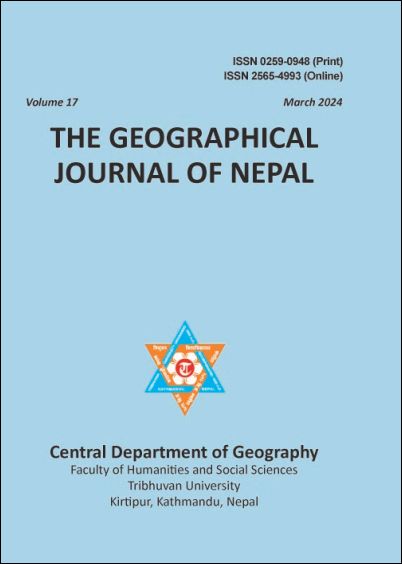Agricultural land abandonment and its impact on soil erosion in the Madi Watershed, Gandaki Province, Nepal
DOI:
https://doi.org/10.3126/gjn.v17i01.63935Keywords:
agricultural land abandonment, cultivated land, RUSLE model, satellite image, soil erosionAbstract
Agricultural land abandonment is the crucial issue of land use /land cover change in many parts of the world and it is directly related to soil erosion in the mountain areas. Nepal has also faced heavy agricultural land abandonment from the mountain regions in the last two decades. This study is concerned with agricultural land abandonment and its impact on soil erosion in the Madi Watershed, Gandaki Province of Nepal. This study used high-resolution aerial photography and Google Earth images to map cultivated land and its abandonment in 1995 and 2020. The Revised Universal Soil Loss Equation (RUSLE) model has been used to estimate soil erosion. Studies revealed that more than 40% of the agricultural land was abandoned from 1995 to 2020 and there is higher spatial variability of abandonment intensity. High altitude and steeper slope areas have a higher intensity of abandonment than in lower altitude and lower slope gradients. There is a significant impact of abandonment of agricultural land on reducing soil erosion from 1995 to 2020. The average rate of soil erosion was quite high in 1995 but decreased to 51.5 percent in 2020. There are higher rates of reduction in soil erosion at higher altitudes and marginal lands like steeper slopes and the areas having lower solar radiation because of the higher proportion of agricultural land abandonment. Thus, it can be concluded that agricultural land abandonment during the last 25 years significantly impacts soil erosion control in the study area.
Downloads
Downloads
Published
How to Cite
Issue
Section
License
Copyright (c) 2024 The Author(s)

This work is licensed under a Creative Commons Attribution 4.0 International License.
© Authors




